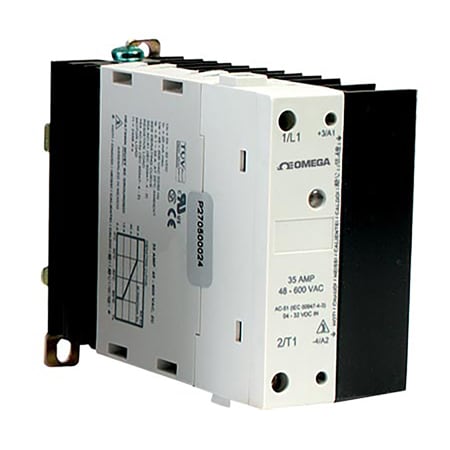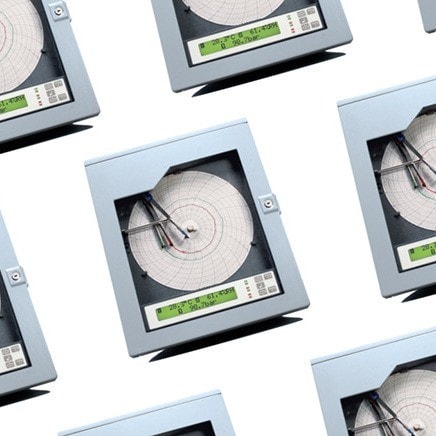In a complex electrical system, like the ones found in a car or an industrial machine, there are components that require a lot of power to operate (things like motors or lights), and there are others (like control systems) that only need a small, low-power signal to operate. With such drastic difference within a single system, control of electrical flow is critical for successful operation.
To achieve such control? Industry professionals turn to relays.

What are Relays?
Relays, the devices controlling most types of circuits, are electrical control switches that facilitate the flow of electricity by allowing a small electrical signal to control much larger, more powerful circuits. These switches are integral to systems where high-power circuits need to be controlled by low-power signals, providing a crucial layer of separation between the two. By creating this distinction between low and high voltage, relays ensure that sensitive control systems are protected from the risks, surges, and stresses associated with high-power circuits. This protective function helps to prevent damage to delicate electronics and allows for the safe automation of complex electrical tasks, such as starting motors, activating lights, or controlling heating and cooling systems.
Relay Designs
In some cases, multiple types of relays may be suitable for a specific application, depending on the requirements of the system. It's crucial to understand the different form factors, technologies, and configurations of relays to choose the most appropriate one for your particular needs. Each type of relay—whether electromechanical, solid-state, time-delay, or others—offers distinct advantages based on factors such as power handling, switching speed, reliability, and physical size. For example, electromechanical relays are ideal for high-current switching, while solid-state relays are better for fast, silent operation with no moving parts.
Certain applications require specific strengths from relays, such as the ability to handle high voltage, the need for quick switching, or the capacity for long-term reliability in harsh environments. However, it's important to note that many relays also have limitations that may make them unsuitable for certain types of switches or controllers. For instance, relays with mechanical contacts might wear out faster due to frequent switching, while some solid-state relays may not be able to handle extremely high currents. Therefore, selecting the right relay involves balancing these factors to ensure that it performs efficiently and reliably within the given constraints of the application. Understanding the key characteristics and limitations of different relays ensures that you choose the most effective solution for your needs.
Check Out Omega's Relay Selection
Mechanical Relays
Mechanical relays are electromechanical switches used to control the flow of electrical current in a circuit. These devices consist of an electromagnetic coil, a set of contacts, and a spring mechanism. When an electric current flows through the coil of the electromagnet, it creates a magnetic field that attracts a metal arm or switch which, depending on the design, causes the contacts to either close (make a connection) or open (break a connection). This in beneficial because it allows the relay to switch a high-power circuit on or off using a low-power control signal. Mechanical relays have been relied on for decades in various applications – such as automotive systems, industrial machinery, and home appliances.
One of the key advantages of mechanical relays is their simplicity and reliability in switching large currents or voltages. They can provide galvanic isolation between the control and switched circuits, protecting sensitive components from high voltages. However, mechanical relays do have some limitations. They have moving parts, which means they are subject to wear and tear over time, leading to reduced lifespan and slower switching speeds compared to solid-state alternatives. Additionally, the mechanical contacts can suffer from issues like arcing, which can cause degradation of the relay's performance. Despite these drawbacks, mechanical relays remain widely used due to their cost-effectiveness and ability to handle high currents.
Solid-State Relays

Solid-state relays are electronic switching devices used to control the flow of electricity in a circuit. These devices differ from mechanical relays in that they have no moving parts. Unlike traditional electromechanical relays, which use an electromagnet to open or close contacts, solid-state relays use semiconductor components such as thyristors or phototransistors to perform the switching action.
Since there is no physical wear-and-tear from moving parts, solid state relays are faster, more reliable, and more durable than mechanical relays, and they are typically used in situations where precise control, silent operation, and longer lifespans are required – such as in industrial automation, temperature control systems, and heating applications.
The main advantage of solid-state relays over their mechanical counterparts are their ability to operate without producing physical noise or experiencing contact bounce, a common issue in mechanical relays that can result in unreliable switching. Additionally, solid-state relays provide a high level of electrical isolation between the control and load circuits, which is important for safety in high-voltage applications. However, while solid-state relays offer many benefits, they can be more expensive than traditional relays, and they may require heat sinks for effective thermal management, especially when switching high loads. Despite this, their reliability, speed, and efficiency make them ideal for many modern electronic control systems.


